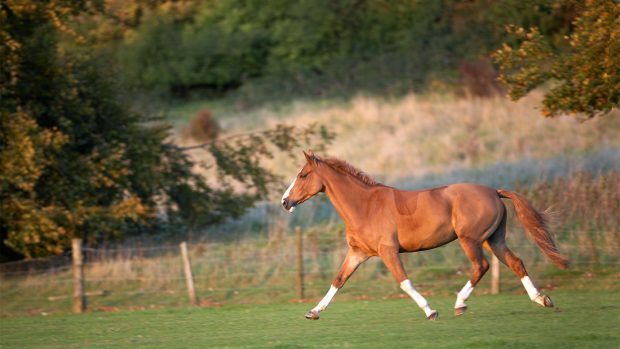Osteoarthritis of the lower hock joint, also known as bone spavin, is incurable, and the aim of treatment is to manage the pain.
It has been suggested that with time the lower hock joints will spontaneously fuse and subsequently become pain-free. In my experience this is very rare. Rest may result in temporary resolution, but generally lameness recurs when work starts.
In horses with minor X-ray changes or certain types of bone spurs around the joint, my preferred treatment is to inject medicines into the joints. Corticosteroids are often effective, but the degree of response and its duration vary hugely and is unpredictable.
Some horses become pain-free for up to six months, whereas in others improvement is only seen for two to three months. It is my impression that the best results come from combining corticosteroids with a joint lubricant (hyaluronan).
Although there is physical communication between the two lower joints in only about 35% of horses, a recent study showed that therapeutic concentrations of drugs can be achieved in both joints by injecting the lowermost joint only. This is good news because it is physically easier and safer to inject into this joint.
There is an alternative medication that can be injected into the lower joints called Adequan. This works differently to corticosteroids and may prevent further degenerative change within the joint. Despite spavin being quite common, there has been no good clinical trial to compare the efficacy of this with corticosteroids.
Shoeing
Corrective trimming and shoeing may help some horses, but should be used with care and with reference to each horses conformation and the way it both stands and moves.
A horse with a base-narrow conformation that overloads the outside of the limb, or one who twists the foot a lot during weight bearing may benefit from a small extension to the outside branch of the shoe (making the outside branch wider), or the use of a trailer (an outward projecting spur from the heel of the shoe). Keeping the toe short and rolling the toe may facilitate breakover and help to reduce pain.
Shockwaves
Recently, shockwave therapy has been introduced as an additional treatment, and there is some indication that it may help reduce pain. However, I think that it should be seen as an extra rather than primary means of treatment. Many horses with bone spurs can return to full function managed in this way.
Obviously, in a competition horse any medication has to be carefully timed so that it complies with rules. But horses with predominantly destructive X-ray changes respond poorly to these treatments and provide a much greater challenge.
Clinical trials are now taking place to assess the efficacy of a currently unlicensed drug, Tildren, in the management of spavin. This may modify bone metabolism and stop further bone destruction, perhaps allowing repair to take place.
Joint fusion
For horses with major bone destruction, this leaves joint fusion as currently the most appropriate treatment. Joint fusion can be achieved surgically, by drilling into the joint spaces under X-ray control. The aim is to remove some of the cartilage and stimulate accelerated fusion of the joint.
The speed of response and the efficacy of fusion seem to vary hugely; some tend to develop a lot of bone around the surgical sites, which is probably not good. Generally, fusion takes six to nine months to develop and, at most, 65% of treated horses are able to return to some work.
An alternative means of fusion is to inject a chemical called sodium moniodoacetate (MIA) into the joints. This destroys the cartilage and probably local nerve endings as well. It is only feasible if the joint spaces are not already narrowed to such an extent that injection is not physically possible.
The treatment is often associated with quite severe pain within the first 15hr of treatment, but with appropriate painkillers this can usually be managed satisfactorily. Chemical fusion can be very effective and in my experience, if successful, tends to be quicker than surgical fusion.
However, if the horse has some communication between the lower and uppermost moving hock joints, it is not a suitable candidate for chemical fusion.
Whichever method of joint fusion is used, the biomechanics of the hock alter. Some horses that were successfully treated initially have gone on to develop recurrent lameness associated with osteoarthritis in the upper hock joints, or a fracture of the fused lower bone unit.
|
||
 |
||


 Get up to 19 issues FREE
Get up to 19 issues FREE TO SUBSCRIBE
TO SUBSCRIBE 


